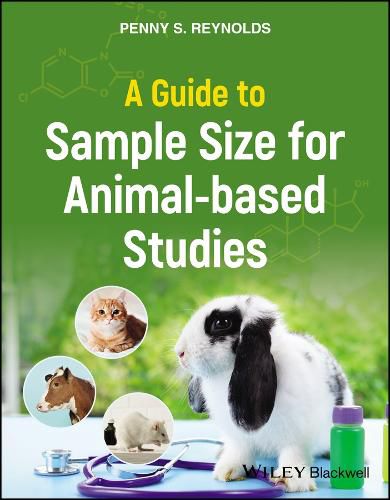Readings Newsletter
Become a Readings Member to make your shopping experience even easier.
Sign in or sign up for free!
You’re not far away from qualifying for FREE standard shipping within Australia
You’ve qualified for FREE standard shipping within Australia
The cart is loading…






A Guide to Sample Size for Animal-based Studies Understand a foundational area of experimental design with this innovative reference
Animal-based research is an essential part of basic and preclinical research, but poses a unique set of experimental design challenges. The most important of these are the 3Rs ? Replacement, Reduction and Refinement ? the principles comprising the ethical framework for humane animal-based studies. However, many researchers have difficulty navigating the design trade-offs necessary to simultaneously minimize animal use, and produce scientific information that is both rigorous and reliable.
A Guide to Sample Size for Animal-based Studies meets this need with a thorough, accessible reference work to the subject. This book provides a straightforward systematic approach to "rightsizing" animal-based experiments, with sample size estimates based on the fundamentals of statistical thinking: structured research questions, variation control and appropriate design of experiments. The result is a much-needed guide to planning animal-based experiments to ensure scientifically valid and reliable results.
This book offers:
Step-by-step guidance in diverse methods for approximating and refining sample size Detailed treatment of research topics specific to animal-based research, including pilot, feasibility and proof-of-concept studies Sample size approximation methods for different types of data ? binary, continuous, ordinal, time to event ? and different study types ? description, comparison, nested designs, reference interval construction and dose-response studies Numerous worked examples, using real data from published papers, together with SAS and R code
A Guide to Sample Size for Animal-based Studies is a must-have reference for preclinical and veterinary researchers, as well as ethical oversight committees and policymakers.
$9.00 standard shipping within Australia
FREE standard shipping within Australia for orders over $100.00
Express & International shipping calculated at checkout
A Guide to Sample Size for Animal-based Studies Understand a foundational area of experimental design with this innovative reference
Animal-based research is an essential part of basic and preclinical research, but poses a unique set of experimental design challenges. The most important of these are the 3Rs ? Replacement, Reduction and Refinement ? the principles comprising the ethical framework for humane animal-based studies. However, many researchers have difficulty navigating the design trade-offs necessary to simultaneously minimize animal use, and produce scientific information that is both rigorous and reliable.
A Guide to Sample Size for Animal-based Studies meets this need with a thorough, accessible reference work to the subject. This book provides a straightforward systematic approach to "rightsizing" animal-based experiments, with sample size estimates based on the fundamentals of statistical thinking: structured research questions, variation control and appropriate design of experiments. The result is a much-needed guide to planning animal-based experiments to ensure scientifically valid and reliable results.
This book offers:
Step-by-step guidance in diverse methods for approximating and refining sample size Detailed treatment of research topics specific to animal-based research, including pilot, feasibility and proof-of-concept studies Sample size approximation methods for different types of data ? binary, continuous, ordinal, time to event ? and different study types ? description, comparison, nested designs, reference interval construction and dose-response studies Numerous worked examples, using real data from published papers, together with SAS and R code
A Guide to Sample Size for Animal-based Studies is a must-have reference for preclinical and veterinary researchers, as well as ethical oversight committees and policymakers.